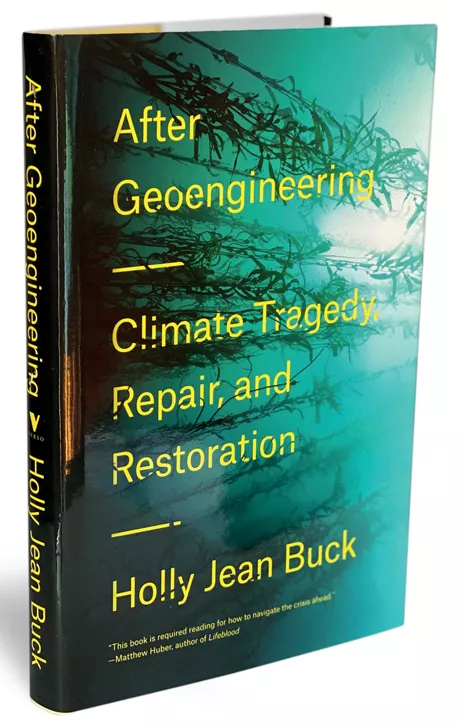Is Geoengineering a Solution to Global Warming?
"After Geoengineering" documents a spectrum of planetary interventions

If you can get past the hokey, chose-your-own-adventure introduction and the random vignettes of cli-fi pastiche, After Geoengineering: Climate Tragedy, Repair, and Restoration (Verso, 2019) is a provocative imagining of the ways civilization might avoid catastrophic global warming.
Holly Jean Buck, a fellow at the Institute of the Environment and Sustainability at UCLA, wants to bust up the misconceptions that plague how we talk about geoengineering. The first of these is that geoengineering (which you could define as any shift of Earth's systems big enough to have a global impact) means only solar-radiation management: the madman idea that we'll spray the sky with sulfur dioxide to cool the planet.
As Buck details in After Geoengineering, there is a range of possible methods for halting global temperature rise, most of which fall into the category of sucking up CO2. Some geoengineering ideas are biotic, ways of "making nature work faster," like sowing seaweed groves and planting forests. Others are mechanical, like drawing down CO2 with giant fans and constructing rocks—whole mountains even—out of the captured pollution. There's a spectrum of planetary-scale interventions to consider, most of them still very pie-in-the-sky, some more frightening than others, and none free of scientific uncertainties.
Buck's larger point is that our choice of paths is not only a technical issue but also a political one: "What's clear is that we need a social imagination to match our technological imagination." Otherwise, we risk surrendering to existing elites the choice of which, if any, forms of geoengineering to deploy—a surrender that, in any scenario, would lead to the worst of all worlds.
This article appeared in the January/February 2020 edition with the headline "Scenario Planning."
 The Magazine of The Sierra Club
The Magazine of The Sierra Club



